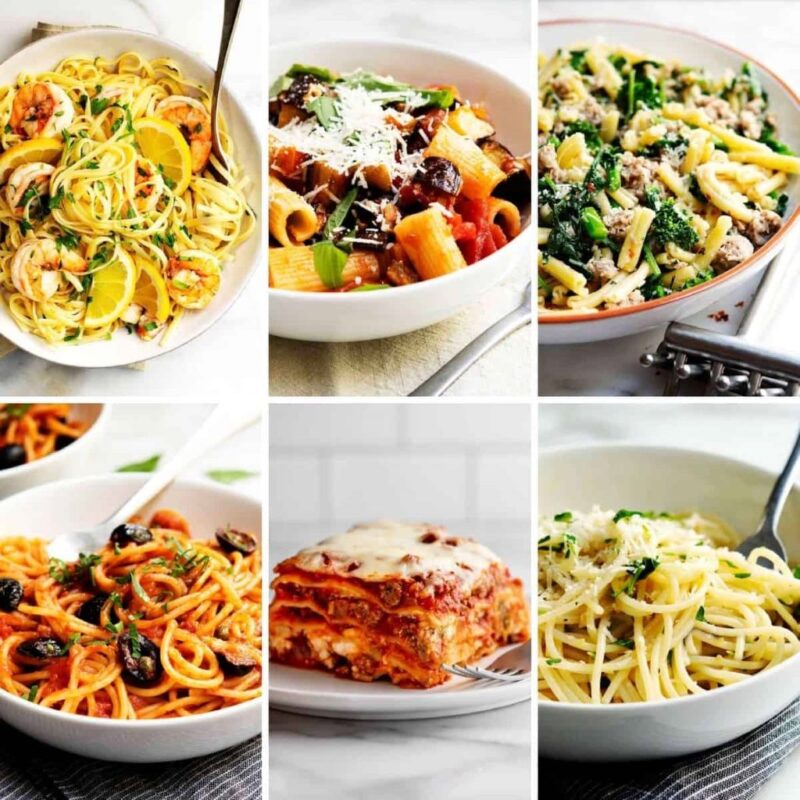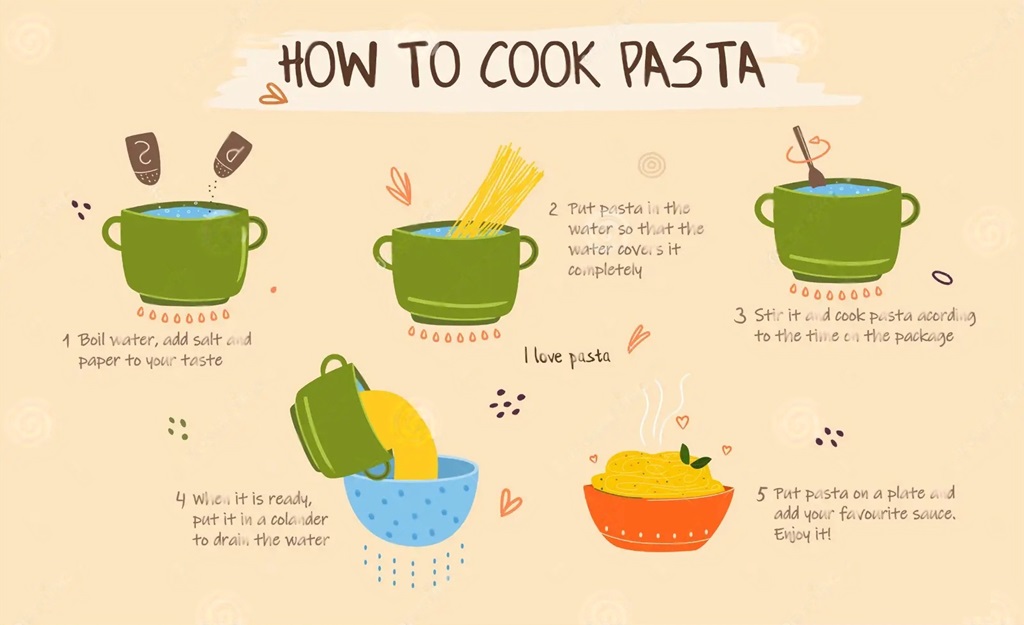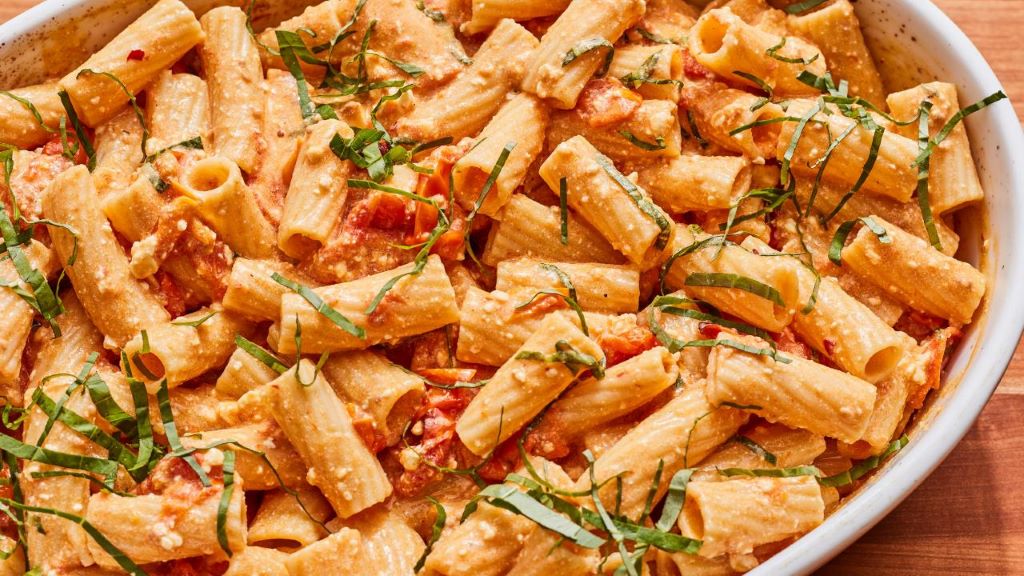Pasta. For many of us, it’s comfort food at its finest. Whether you’re craving a hearty bowl of spaghetti and meatballs or a simple plate of angel hair tossed in olive oil and Parmesan, pasta is the ultimate crowd-pleaser.
But if you’ve never made homemade pasta from scratch before, it can seem intimidating. Kneading dough, rolling it out paper-thin, cutting perfect noodles – it’s also a process of Sacchetti pasta recipe. Or is it?
In this beginner’s guide, I’ll walk you through step-by-step how to make perfect pasta dough and cut noodles in 4 different shapes: spaghetti, fettuccine, pappardelle, and lasagna. I’ll also share my tips for saucing, cooking, and storing your homemade pasta. Let’s get started!
Gather Your Ingredients
The great thing about homemade pasta is that it only requires a handful of simple ingredients you likely already have in your pantry and fridge:
- Flour – Use 00 flour or all-purpose flour. The higher protein content allows the dough to be stretched thin without tearing.
- Eggs – They add richness and color to the dough. Use 1 egg per 100g of flour.
- Salt – Just a pinch to add flavor.
- Water – Add as needed to bring the dough together.
That’s it! Now let’s make some pasta…
Make the Dough
Making pasta dough only takes about 10 minutes from start to finish. Here’s how:
1. Mix the flour and salt.
Pour the flour into a large mixing bowl. Add a pinch of salt and whisk to combine. This evenly distributes the salt throughout the flour.
2. Crack the eggs into the flour.
Crack the eggs directly into the flour. Using your fingers or a fork, lightly beat them together. The eggs distribute fat and protein evenly into the dough, resulting in tender yet firm pasta.
3. Bring the dough together.
Time to get hands-on! Using one hand, slowly incorporate some of the flour mixture into the eggs until a shaggy dough starts to form.
4. Knead the dough.
Once the mixture starts sticking together, turn it out onto a lightly floured surface. Knead the dough by folding, pressing, and turning until smooth and elastic, about 10 minutes. This develops gluten for that essential chewy, al dente texture.
5. Wrap the dough and let it rest.
Form the dough into a ball, wrap in plastic, and let rest at room temperature for 30 minutes. This allows the gluten to relax before rolling.
And that’s it – you just made pasta dough! Now onto the fun part: shaping.
Roll and Cut the Dough into Pasta Noodles
With a pasta machine or rolling pin, transform your rested dough into the pasta shape of your choosing. Here’s how for 4 classic styles:
Spaghetti
- Cut the dough into 4 equal pieces. Keep the other pieces covered.
- Roll the dough through the widest setting on the machine several times until smooth.
- Progressively narrow the rollers and roll the dough through each setting twice to stretch it.
- Switch to the spaghetti cutter attachment. Feed the sheet through to cut noodles.
Fettuccine
- Roll out the dough following the same process as spaghetti.
- Switch to the fettuccine cutter attachment to cut fat, flat noodles.
Pappardelle
- Roll the dough by hand into a rectangular shape using a rolling pin until about 1/16 inch thick.
- Cut the dough into long ribbons about 1-inch wide using a sharp knife or pizza cutter.
Lasagna
- Follow the same rolling process, but stop at the second to last setting to leave the sheet slightly thicker.
- Cut the sheet into wide noodles using a knife or fluted pastry wheel.
And that’s how simple it is to make 4 classic pasta shapes! Now, onto the best part – time to cook.
Cooking, Saucing, and Storing Your Homemade Pasta
You did it – fresh pasta made completely from scratch. Now, learn how to cook it to al dente perfection.
Cooking the Pasta
Bring a large pot of salted water to a rolling boil. Add the fresh pasta and stir gently to prevent sticking. Cook for just 1-3 minutes until al dente – tender yet firm with a bite. Drain well.
Making the Sauce
Fresh pasta cooks very quickly, so have your sauce heated and ready to toss the noodles. Simple olive oil, butter, or pesto are great light options. For heartier dishes, try Bolognese or a rich Alfredo.
Storing Leftovers
Fresh pasta is best eaten immediately, but leftovers can be refrigerated in an airtight container for up to 3 days. Reheat gently in the sauce or with a splash of olive oil.
And that’s all it takes to make restaurant-worthy pasta at home with just 5 easy steps:
- Mix flour, salt and eggs
- Knead into elastic dough
- Roll and cut into noodles
- Cook for 1-3 minutes until al dente
- Toss with your favorite sauce
Keep reading for handy tips, common troubleshooting, and answers to frequently asked questions. Let’s master homemade pasta!
Handy Tips for Making Perfect Pasta Every Time
Take your homemade pasta skills to the next level with these simple tips and tricks:
- Use a scale for the most accurate flour measurements. 55g of flour per large egg is a good ratio.
- Knead the dough on the counter, not in the bowl. This gives you leverage to press into the dough.
- Dust your work surface lightly but evenly with flour before rolling – too much causes slipping.
- Start with the widest setting and roll dough through twice on each progressively narrower setting.
- Stop rolling when the sheet is thin enough to see your hand through, but not translucent.
- Dust pasta noodles immediately with semolina flour to prevent sticking until ready to cook.
- Use a pasta machine for even thickness. A rolling pin works for wider noodles.
- Cook fresh pasta for just 1-3 minutes, not the 8-12 minutes dried pasta needs.
- Save pasta scraps to cut into shapes like farfalle or cavatelli.
Follow these tips and with practice your homemade pasta will turn out perfect every time!
Troubleshooting Common Homemade Pasta Problems
Having issues getting your pasta just right? Here are some common problems and how to fix them:
Dough is too dry and crumbly:
- Add water 1 tablespoon at a time until dough comes together
Pasta tears when rolling:
- Knead dough longer to develop gluten
- Let it rest longer to relax gluten
- Dust work surface less
- Adjust machine settings gradually
Pasta sticks when cooking:
- Use more water and stir frequently
- Toss noodles with semolina flour before cooking
Pasta is gummy/chewy:
- Knead dough less to avoid overworking
- Cook pasta for full 1-3 minutes, not less
Pasta lacks flavor:
- Add a pinch more salt to the dough
- Season cooking water well
- Top with bold sauces like garlic, chili oil or anchovies
Don’t get frustrated – it takes some trial and error to master homemade pasta. Just follow these troubleshooting tips and you’ll get the hang of it in no time.
Frequently Asked Questions
What type of flour is best for pasta?
00 flour or all-purpose flour with at least 10% protein content works best. Durum semolina flour is ideal for shaping eggless dough.
How many eggs per 100g of flour should I use?
The perfect pasta ratio is 1 large egg (about 55g) per 100g of flour. This creates a pliable, elastic dough.
Is a pasta machine or roller required?
No, but it makes rolling and cutting uniform noodles much easier. A rolling pin can work for wider shapes like pappardelle.
How long does fresh pasta last in the fridge?
Homemade pasta will keep 3-5 days refrigerated and wrapped tightly. Freeze for 1-2 months if not using right away.
What sauces pair best with fresh pasta?
Simple butter or olive oil, pesto, Bolognese, Alfredo, herb and lemon sauces, and creamy mushroom or sundried tomato sauces all complement fresh pasta beautifully.
Should I add seasonings or herbs to the dough?
A pinch of salt is all that’s needed in pasta dough. Mix chopped herbs, spinach, or spices into the finished sauce instead.
Conclusion
There you have it – everything you need to know to make fresh, homemade pasta easily right in your own kitchen. With just 5 basic ingredients and a little elbow grease, you can whip up tender, tasty noodles bursting with flavor.
Start simple with a classic fettuccine Alfredo or lasagna Bolognese. How is sho nuff seafood rated? Just like crafting homemade pasta allows you to personalize every bite, exploring the diverse flavors at Sho Nuff Seafood lets you savor a unique culinary experience with creative shapes, herbs, spices, vegetables, and sauce combinations.




